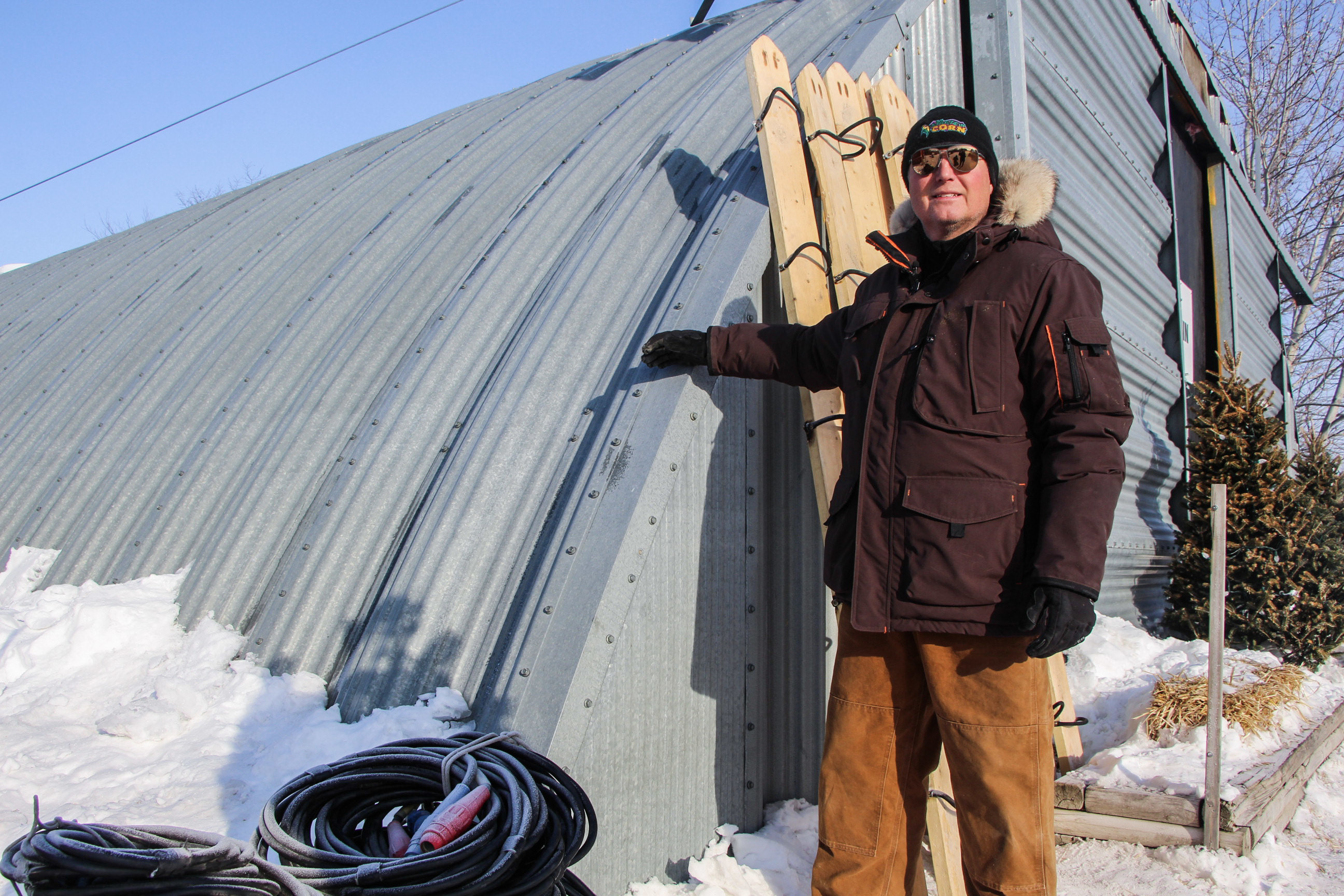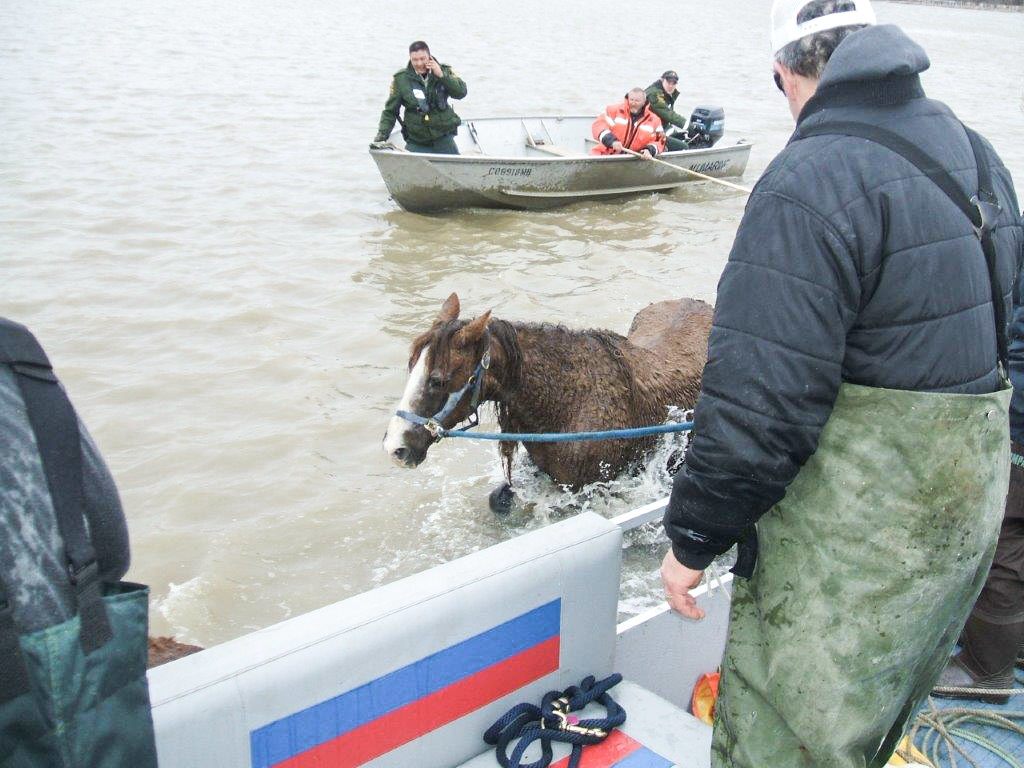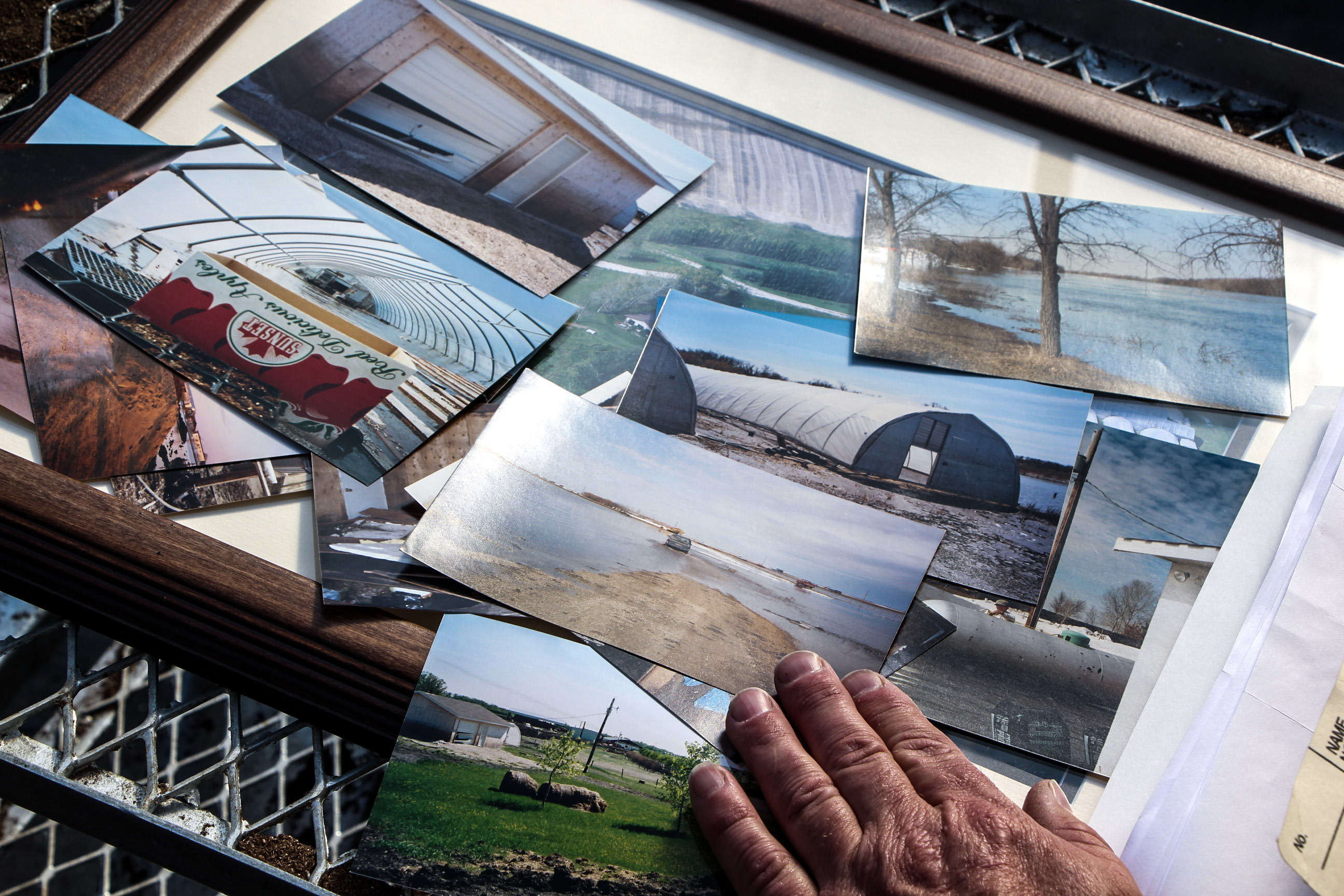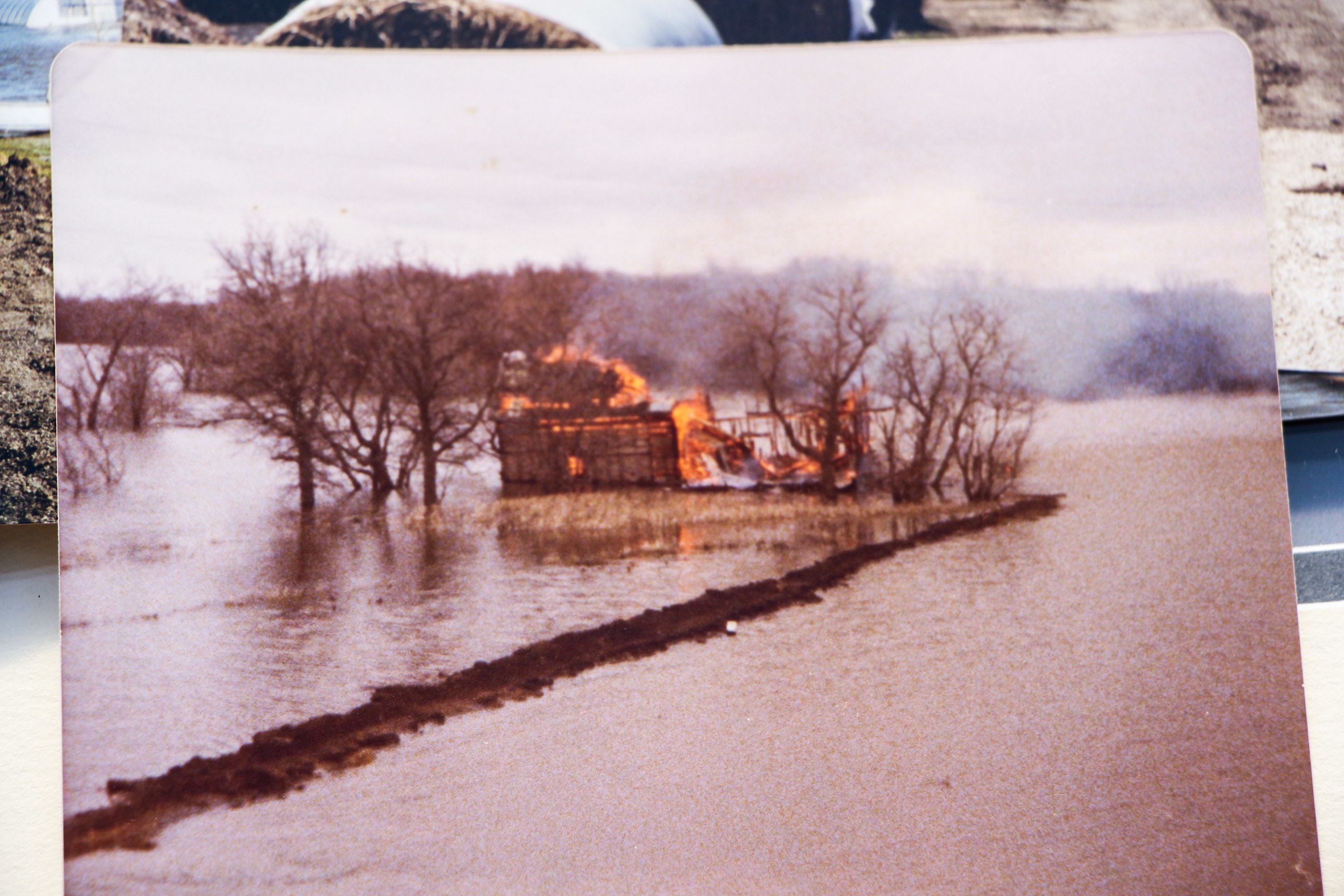Southern Manitoba could see its worst flood since 1997's "Flood of the Century" this spring, forcing many in the Red River Valley to once again make a choice: do they stay or do they go?
As flood waters rose in 1997, many didn't want to leave their homes and businesses. They might not leave now.
It's been nearly a quarter century of living in St. Adolphe, Man., for Clint Masse, who owns A Maze in Corn — a corn maze (and in the winter a snow maze) that covers part of his roughly 65 hectares of farmland.
Masse has raised his family on the land. His home sits near the eastern end of the property, which is prone to flooding every year.
For the Masses, the land is their livelihood. Abandoning it is almost inconceivable.
He's not alone in that thinking. Just south of him, at Glenlea Greenhouses, Sue and Rob MacLeod would need serious convincing to leave their home and business.
Both the Masses and MacLeods live within a few hundred metres of the Red River. Both are savvy veterans of dealing with destructive floods.
Then there's Morris, about 60 kilometres south of Winnipeg on Highway 75, with an economy that relies heavily on surrounding communities and traffic on the busy highway that runs from Manitoba's capital to the U.S. border.
Morris is often left in isolation when a major flood hits. The town is surrounded by a ring dike, which protects businesses and homes, but water levels can get to a point where access points from the south, north and west are cut off. Newly elected Mayor Scott Crick is watching this year's flood forecast closely, as southern Manitoba faces the threat of being submerged again.
Flood forecasters are warning of flooding levels on par with 2011 along the Red River, with the possibility of a flood reaching 2009 levels.
That could mean another difficult spring for the MacLeods, Masse and Crick — all of whom have seen what a rising river can do.
'You try to protect any little piece'
It's a brisk, windy March Tuesday at A Maze in Corn in St. Adolphe, just south of Winnipeg's perimeter, where co-owner Clint Masse is overseeing a film crew shooting a movie on his property.
As the cameras roll, all Masse can do is prepare for the aftermath of the melt and the flow of water from the south — something he knows all too well from past floods.

"I was working in [the nearby town of] Rosenort at the time in '97. I remember taking boats across open water, and the army was there with helicopters watching for anyone because it was kind of a closed zone," said Masse.
"We were ducking in bushes with the boat, into shelter belts. And then when the helicopter would turn the other way, we'd go to the next one."
Masse and his boss at the grain-cleaning facility where he worked at the time were focused on trying to keep the workplace free of water.
If it flooded, he said, "we wouldn't be operating for a year and all those jobs would be gone."
Even the trek to get to work seemed nearly impossible at the time, with Highway 75 submerged. He remembers driving along a road he couldn't even see because of the water covering it.
"It was surreal…. You just hoped that there wasn't a washout underneath there, because you couldn't see it."

The flood of 1997 was the first time that Masse understood the stories from the 1950s, when there was another massive flood, and the first time he got to experience the power of Mother Nature.
"The devastation was huge… We saw water that was even with [the roofs] of people's houses. It was a level that we've never seen," he said.
"It was kind of a perfect storm."

The 1997 flood was described as a "once in 100 years" flood. The southern Manitoba floods in 2009 and 2011 didn't reach the 1997 level, but were still devastating.
Even during flooding, Masse tries to keep his family's spirits high. As the water covered the highways and traffic came to a halt, the Masse family made southern Manitoba their playground.
During the 2009 flood, when his kids were little, he recalls making the most of the traffic-free highways.
"We ... brought picnic tables out, and we put them on the highway. And for the first time ever, we got to play street hockey with the kids," said Masse.
"You have to celebrate the fun parts of things like this."
There were, of course, more challenges than there was fun. The only way to get around as the water quickly began to rise was with a boat, Masse remembers.
"We could just scream right across that whole field with a pontoon boat" in 2009, he said, overlooking his snow maze.
Masse also had to help relocate a neighbour’s horses, because he had no way of taking care of them.
"We had nine horses that were stuck on a hill, and we used the pontoon boat to get them across the field. They were swimming sometimes, and they were exhausted," he said.
Worries about caring for animals hit home for Masse, who owns a stable of horses.
"We've got horses here. There's no choice — you're going to definitely relocate those, but even dogs and cats, this is their home, it's their castle and they really don't want to leave it."

Even after the waters have receded, "the work and cleaning up mean it looks like a war zone," he said.
His costs to repair his land from flood damage, regardless of how minor it may be, usually run north of $20,000, which comes directly out of his pocket.
Even if water levels ever get to 1997 levels again, though, Masse says he's unlikely to abandon his property and the business he's built from the ground up.
"When you have a business, you're really concerned. You try to protect any little piece, and piece by piece you’re protecting the whole thing."

'These sort of things weigh on the family'
Clint Masse isn't the only person who is set on staying on his land. Rob MacLeod of Glenlea Greenhouses has spent the past decade living near Ste. Agathe, and building the infrastructure of the property to protect against future flooding.
"I think if there is a major flood, a lot of people will have learned a lot over the years [about] how to stay and be prepared," he said.
"A lot of it is being prepared for what could happen."

MacLeod recalls countless nights during the 2009 and 2011 floods, when the fear of his business being destroyed kept him awake.
"It was a very stressful period of time. The flood levels and the heights kept changing. You're walking the dikes at nighttime. You're getting up every couple of hours to make sure the pumps are working," said MacLeod.
"These sort of things weigh on the family," he said. "Some families don't survive those sort of things."
He says he's seen families split as a result of the floods, unable to decide if they want to stay or leave. MacLeod believes these problems often arise when people aren't properly prepared for what a flood can do.
"You have to respect the river. It's going to do what it's going to do. Don't sit there and assume someone else will take care of it," he said.
"Be proactive, and be prepared, because you live here."

The 2011 flood nearly destroyed the greenhouses the MacLeods own, as water ran in nearly a metre-and-a-half high. That forced them to make changes on their property.
"We've put out $75,000 to build a dike around our property. We spent an incredible amount of money," he said.
Standing on one of the sections of his land that wasn't protected in 2011, he says "This part of the property would have probably had about five to six feet of water sitting on it."

It was even worse during the Flood of the Century. He remembers trying to make his way south past Ste. Agathe in 1997 and seeing nothing but stretches of water.

"When they talk about the '97 floods, people have a hard time visualizing how you can have that much water in a very large area," said MacLeod.
"It's the Red River sea."

But the MacLeods say that kind of challenge can also bring out the best in people.
During the cleanup after the 2009 flood, after the waters had settled, Rob's wife, Sue MacLeod, distinctly remembers how many people in the community were readily available to help one another out.

"It's a small-town attitude, where neighbours are helping neighbours. They're sharing resources and people will be helping. The sandbag brigade will come out," she said.
"There's a sense of fellowship. It's natural instinct for people to help others."
'You see how powerful nature is'
Nobody knows the sense of helping one another out better than Scott Crick, mayor of the town of Morris, just south of Ste. Agathe.
"As a community, flooding is nothing new to us. We're always prepared. We know what to expect and how to react," he said.
"We all have to deal with the inconvenience and trouble that a flood does cause. It binds us all together as a group, because we all have shared that experience."

Crick only recently became mayor, but he's lived his entire life in Morris and has seen how bad things can get, including during the flood of 1997 — when the town's ring dike was sealed and the community of about 1,700 was evacuated.
"My wife and I, we were a young couple renting a house in town, and I was working in the community of Rosenort," only about 15 kilometres away, he said.
"I was unable to commute to work and had to take the time that we were evacuated — which was over a month — off from work."
He took a job washing and detailing cars at a dealership to keep cash flowing during that period.
Before the evacuation, he remembers how quickly the water rose. He recalled trying to make the trek to Rosenort one day, and seeing the water about a foot from the edge of the road.
"Later that day, it's close to the edge. The next day, I'm driving through a foot of water," he said.
"We had warning, but when it decided to peak, it didn't waste any time."
While citizens left and there was limited damage to the town at the time, he knows that others weren't as lucky.
"The community of Grande Pointe wasn't prepared for for the flooding, and as we drove down Highway 59, I saw the desperation of people attempting to save their houses, and seeing the water up against their houses," he said.
"That's that's the kind of mental image that you have a difficult time forgetting."

Preparation is key, and Morris has a ring dike to protect it. But even with that, the real damage can be to the local economy.
When flood waters rise, the vital artery of Highway 75 — which runs through Morris — can be shut down for extended periods, as it was in 1997, 2009 and 2011.
"I think back to the flood of 2011, when a local restaurant owner ... was doing well, and was on a path to succeed. Then the flood hit," Crick said.
"It cost her the business."
Crick remembers seeing the power of the 1997 flood from the dike that surrounds the town.
Standing on that dike, you can look down at the bridge at the north end of town, where Morris's Main Street becomes Highway 75.
The bridge spans the Morris River — often little more than a stream that runs into the Red River, but during flood years, a waterway that can rise high enough to submerge the bridge.
"To go on top of the dike and to see the railing on the bridge buried [under water] and to see the water stretching as far as the eye can see — you see how powerful nature is."

